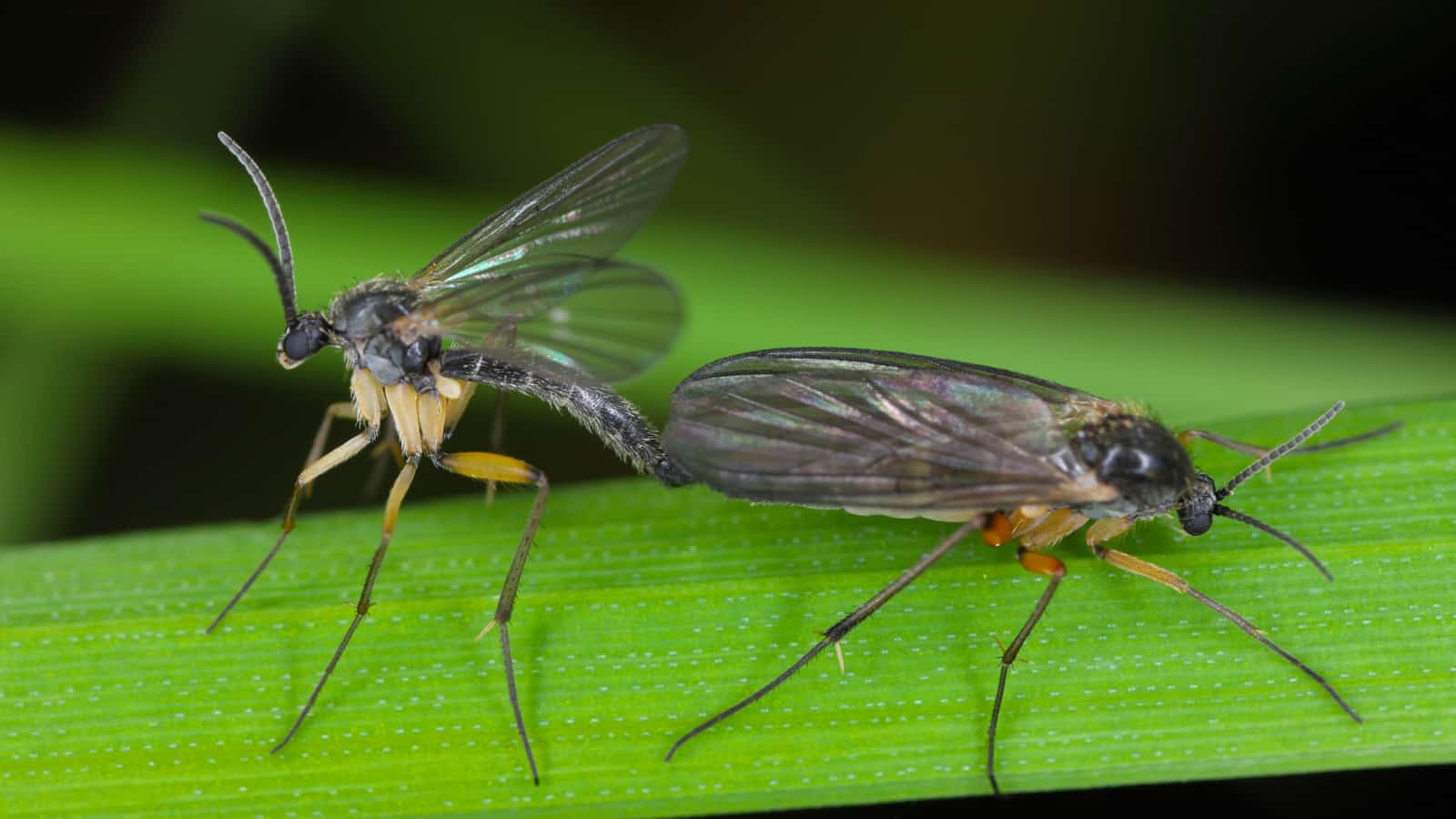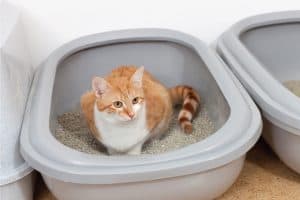Reader's Question:
There are tiny flying bugs all around my cat's litter box. I think they are gnats. They seem attracted to the litter and gross me out when they land on my cat after she goes to the bathroom. What can I do to get rid of gnats in the litter box? I want it to be clean and bug-free for my cat. Please advise!
CatMomma (forum handle), Savannah, Georgia
No one wants a swarm of gnats hovering around their cat’s litter box, right? These tiny pests can turn a simple chore like cleaning the litter box into an annoying task.
And while they might seem insignificant, their presence can feel overwhelming, especially when they won't go away.
It's not just about the annoyance; it's also about the well-being of our furry friends. If you’ve been battling these pesky insects, you’re not alone.
What Are Gnats?
Before diving into solutions, we must understand what we're dealing with.

You might be thinking, "Aren't gnats just teeny-tiny nuisances?" Well, there's a bit more to them.
Gnats are tiny, flying insects attracted to moisture and organic material.
Did you know there are thousands of species of gnats worldwide? Yup, they're everywhere!
And while they might be small, their presence can be big-time annoying. This makes litter boxes a prime target, especially if they're not cleaned regularly.
Why Are Gnats Attracted to Your Litter Box?
There are several reasons why gnats are attracted to your litter box.
First and foremost, cat litter, especially the kind that clumps, is designed to absorb and retain moisture, primarily from cat urine.
This moisture becomes a prime attraction for gnats.
Additionally, the organic materials found in cat feces and the remnants of urine are like gourmet meals for these tiny pests.
It's akin to rolling out a red carpet buffet just for them.
Furthermore, placing a litter box in an area with limited airflow or poor ventilation can create a humid environment.
Such conditions are ideal for gnats to thrive and breed.
Effective Ways to Get Rid of Gnats
Dealing with gnats can be challenging, but the right strategies can make a difference. Below are some tried-and-true methods to tackle the issue effectively.
1. Keep the Litter Box Clean
You know what they say: cleanliness is next to... gnat-less-ness!
Okay, maybe they don’t say that, but keeping your litter box clean is the frontline defense against gnats.
Scooping out the waste daily ensures that gnats don't find their organic feast.
And don't forget the weekly deep clean: empty, wash, and refill. It's like giving your cat's box a fresh start and showing those gnats the exit.
2. Use Diatomaceous Earth
Diatomaceous earth, often called DE, is a game-changer in combating gnats.
What is it exactly? It's a naturally occurring, soft, siliceous sedimentary rock that crumbles into a fine white powder.
When sprinkled over your litter, it acts as a desiccant, dehydrating gnats and their larvae on contact.
It's a safe and natural remedy but always opt for the food-grade version to ensure your cat's safety.
3. Vinegar Trap
Ah, the trusty vinegar trap – a classic in the world of natural pest control. Gnats, for some reason, can't resist the scent of vinegar.
By setting up a bowl filled with apple cider vinegar and adding a few drops of dish soap, you've got yourself a gnat magnet.
The vinegar lures them in, and the dish soap ensures they don't escape.
It's a simple yet incredibly effective method to reduce that gnat population around your litter box.
4. Improve Ventilation
You know, gnats have a thing for stuffy, humid spots. That's why a litter box in a room with little airflow is like a gnat party venue.
You can disrupt their happy hour by adding a fan or opening a window. A well-ventilated area ensures the litter dries faster, making it less appealing to these pests.
So, consider giving your litter box a breath of fresh air; both you and your cat will appreciate it.
Preventing Future Gnat Invasions
Once you've tackled the current gnat problem, it's wise to think ahead.
Implementing preventive measures ensures you won't revisit this pesky issue anytime soon.
1. Use Litter That Absorbs Moisture
Ever noticed how some litters seem to stay drier than others? That's because they're designed with high absorbency in mind.
Opting for a moisture-absorbing litter not only keeps your cat's paws dry but also makes the environment less inviting for gnats.
Click here to see this moisture-absorbing litter on Amazon.
After all, these little pests are suckers for moisture. You're essentially cutting off one of their favorite hangout spots by choosing the right litter.
ome with filters that help manage odors. It's a win-win: your cat gets its privacy, and you get fewer gnats and smells.
2. Natural Repellents
Natural repellents can be a game-changer in the fight against gnats.
Plants like lavender and rosemary aren't just pleasing to our noses; they're also natural gnat deterrents.
Placing these plants near your litter box area creates a barrier against these pesky insects.
It's a win-win: your space smells delightful, and the gnats buzz off. Who would've thought plants could be such handy allies?
A Gnat-Free Future Awaits
Dealing with gnats can be a bit of a hassle, but with the right strategies, you can get rid of them and prevent future infestations.
Remember, consistency is key. Besides, a clean litter box isn't just about keeping gnats away; it's also about providing a hygienic environment for your feline friend.
Over time, as you maintain these practices, you'll notice a significant drop in these pesky invaders.
Regular cleaning and preventive measures will ensure your cat's litter box remains a no-fly zone for gnats.




